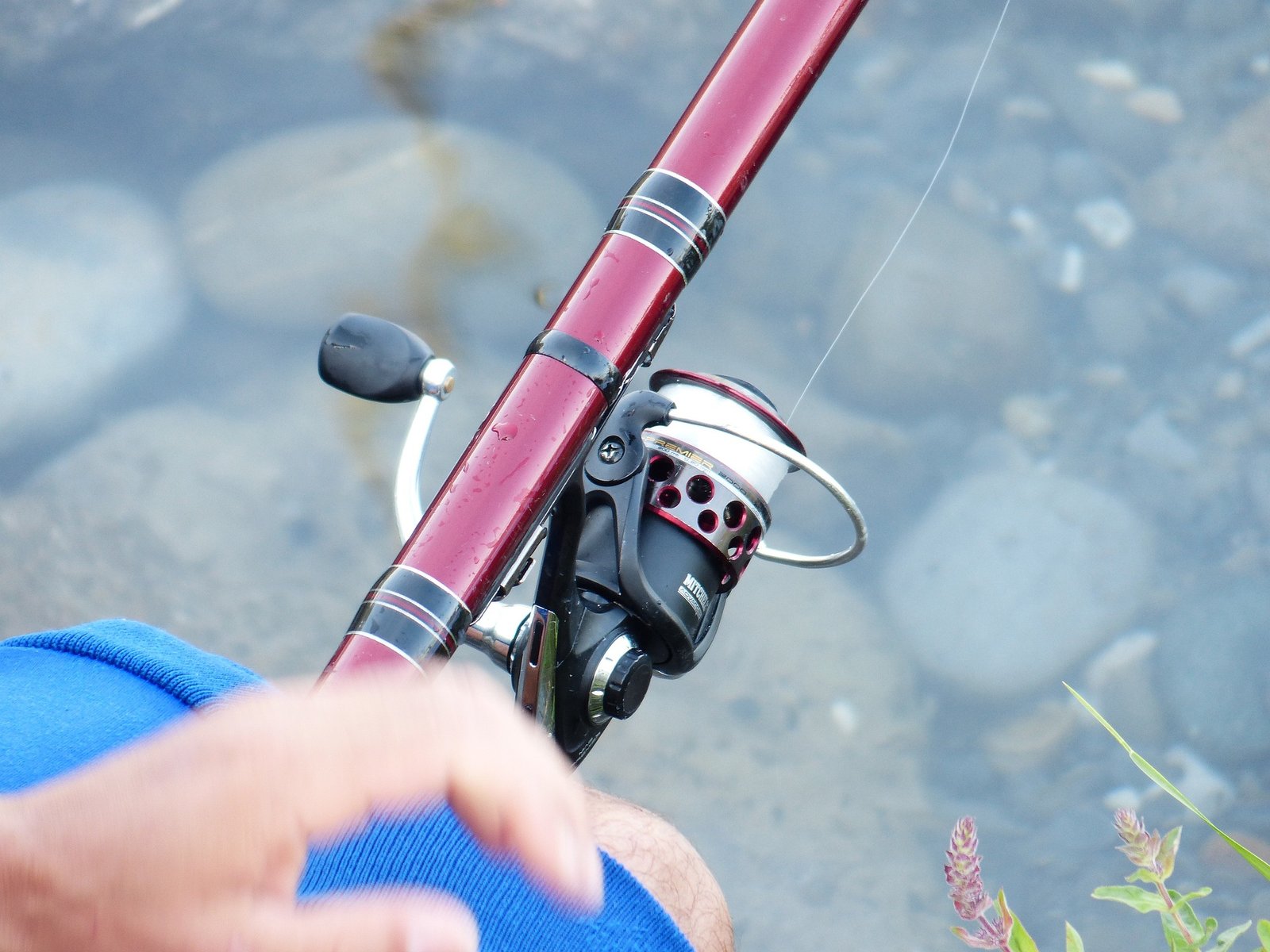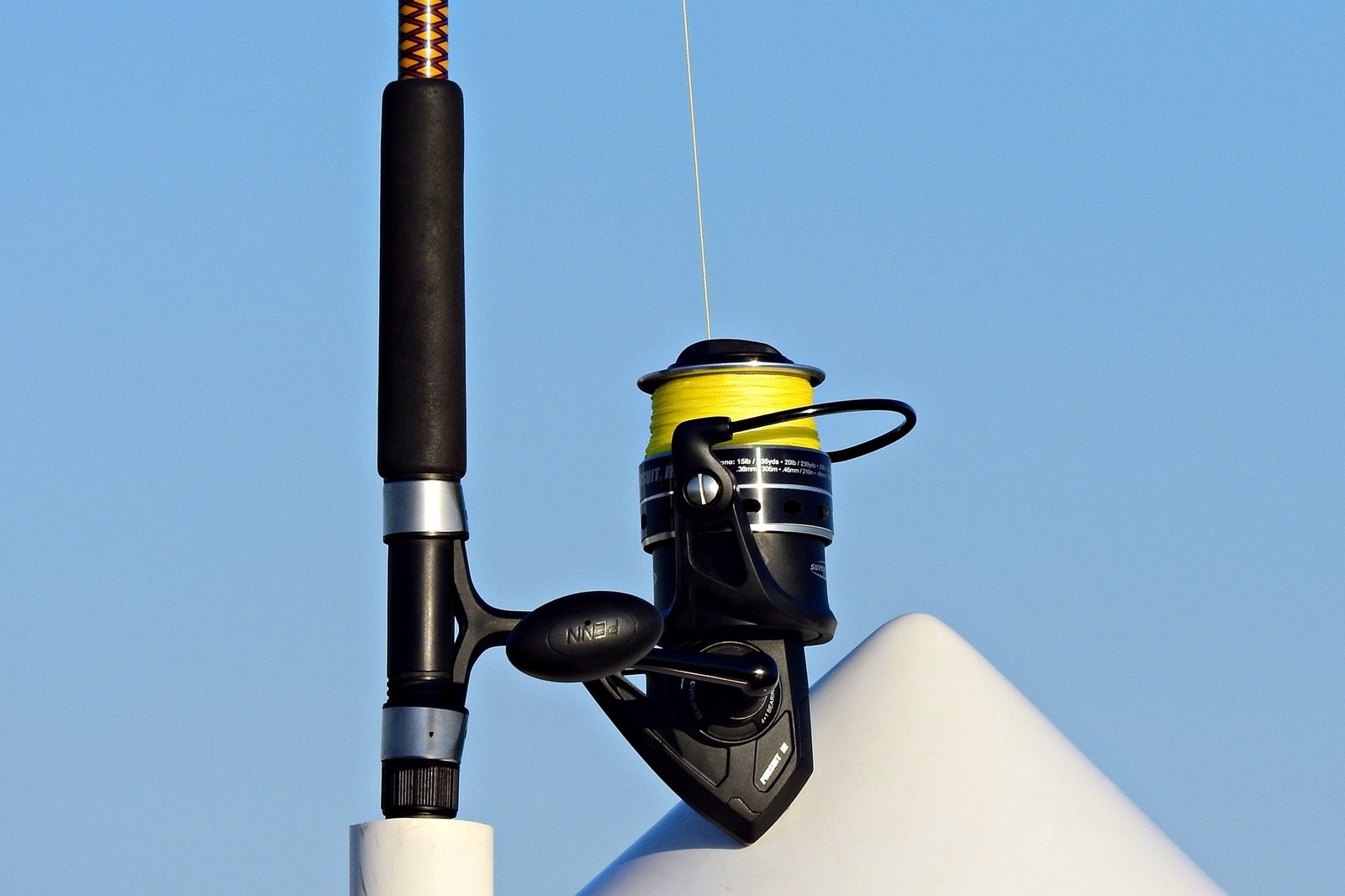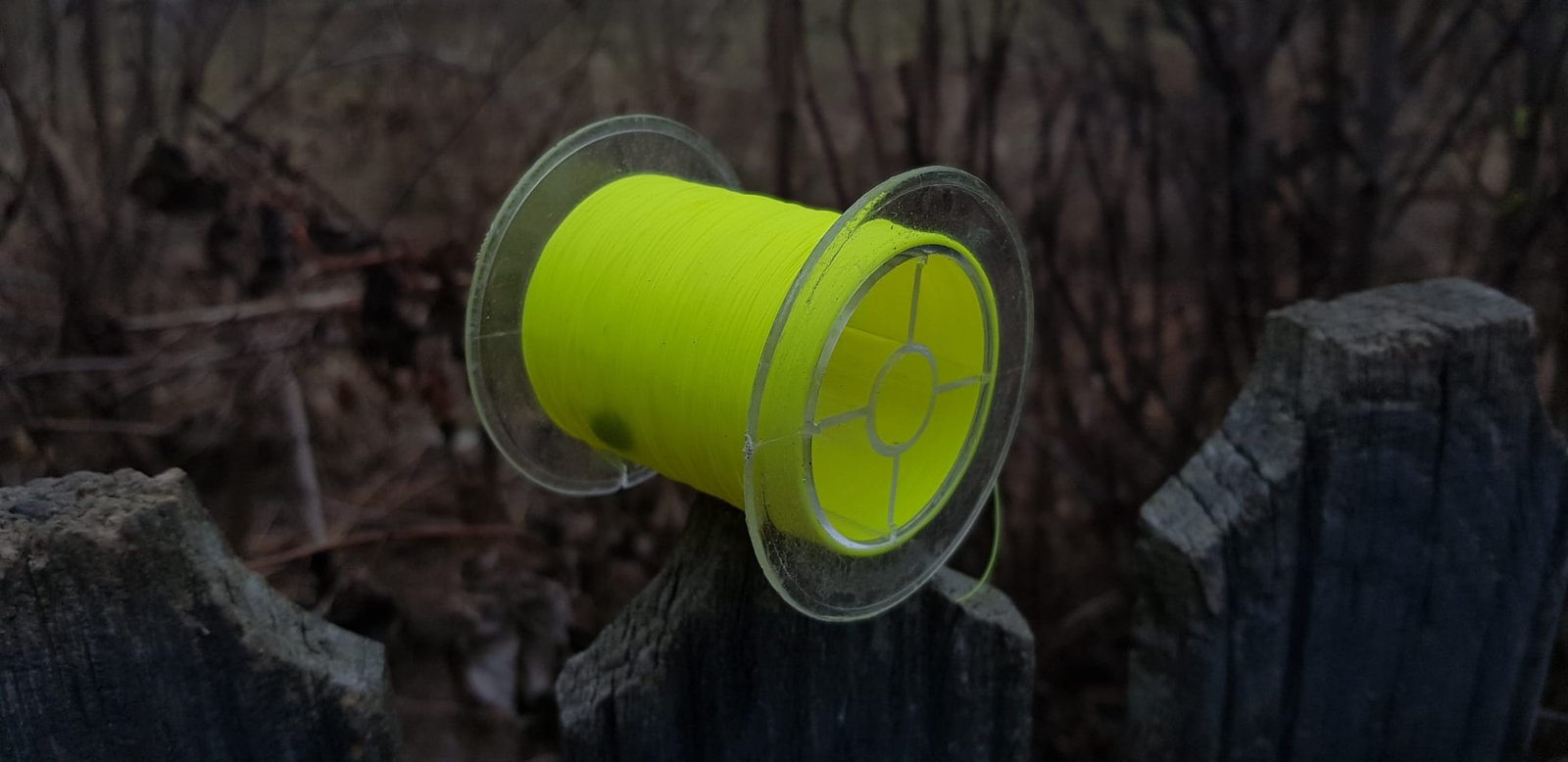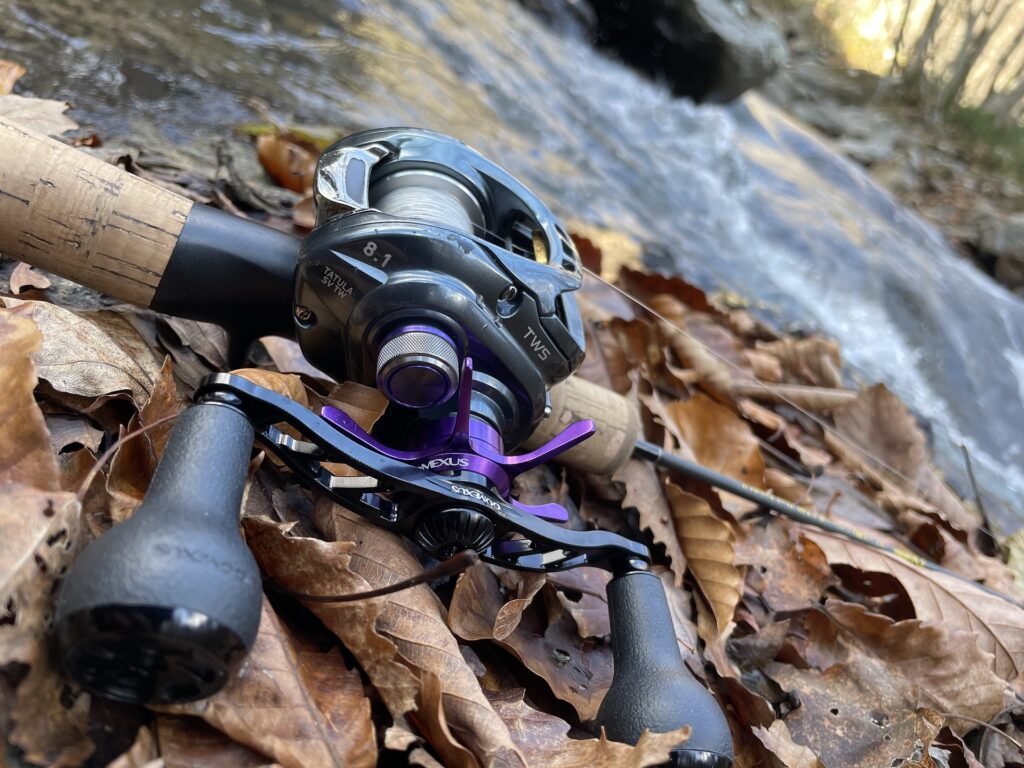
Most lines on the market will get the job done in some way with baitcasters. But which ones do it best?
If you’re searching for lines that work best for the baitcasters themselves, you obviously need something supple enough to fly off the spool nicely. So if you’re not planning to spool up some metal wire on the reel, the line you have in the tackle box probably works.
So “the best line for baitcaster” is related more to the techniques and lures you use than the type of reel itself.
For most anglers, fluorocarbon is the best all-around choice for baitcasting reels.
Fluorocarbon line gives you a great mix of strength, sensitivity, and casting performance. It’s nearly invisible underwater, which helps fool wary fish. Brands like Seaguar BasiX offer good quality at reasonable prices.
If you prefer braided line, that’s another solid option for baitcasters. Braid is super strong for its diameter and lets you cast a mile.
But we haven’t mentioned mono yet. So how where does it sit on the baitcaster line podium?
Read on to see how each type of line performs.
Monofilament Lines
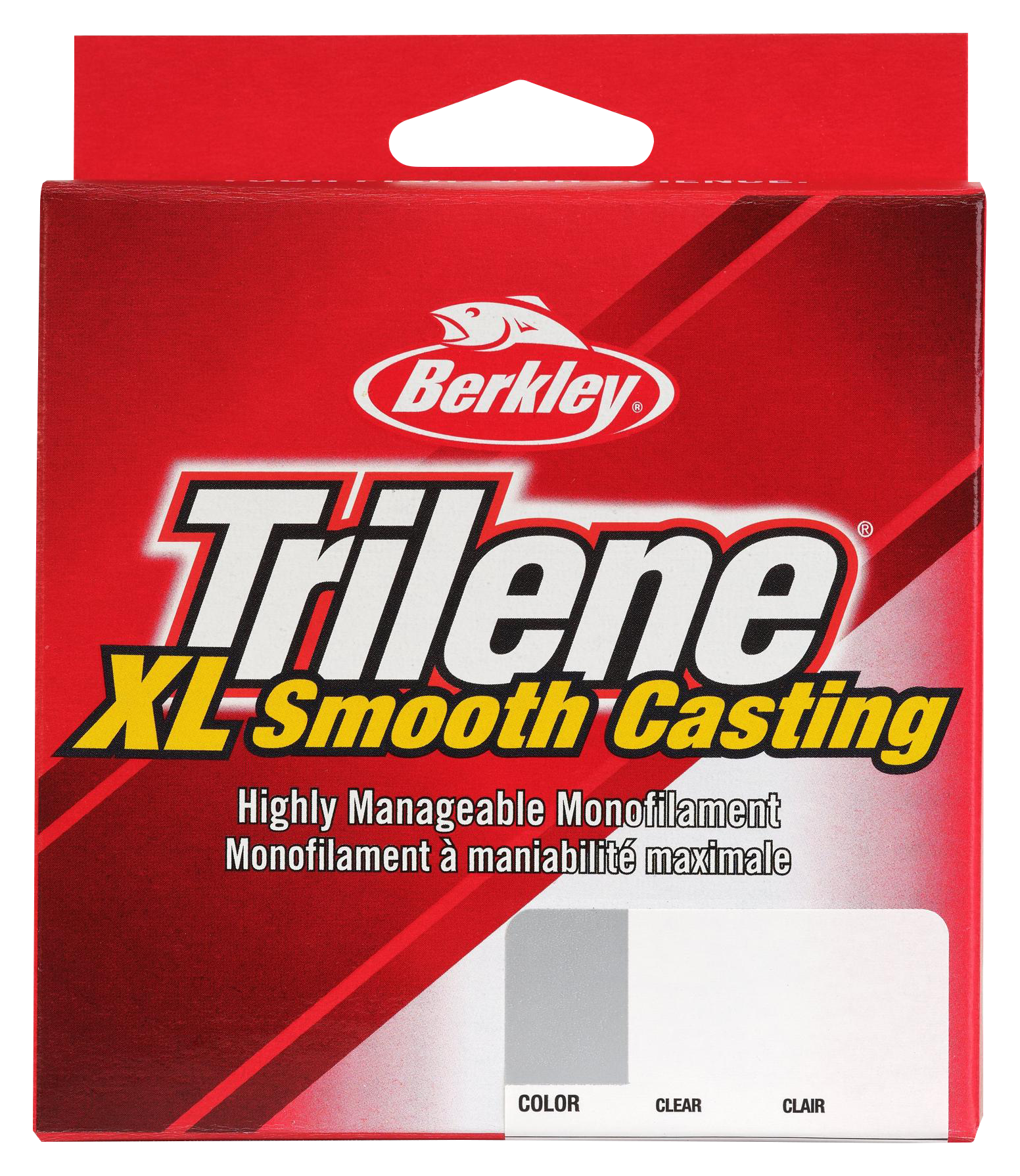
Monofilament fishing lines are a popular choice for baitcaster reels. These lines are made from a single strand of nylon and offer some benefits as an all-around line. It got outpaced by fluorocarbon and braided lines in the last decades, but it still remains an option for many anglers around the world.
Berkley Trilene XL is a top pick for monofilament lines. It’s known for its strength, versatility and affordability. This line works well for various fishing techniques and can handle different types of fish.
One big plus of mono lines is their knot strength. You’ll find it easier to tie secure knots with monofilament compared to other line types. This can be a real advantage when you’re out on the water.
Mono fishing lines also have more stretch than other options. This can be helpful when you’re fighting a fish, as it acts like a shock absorber. It gives you some forgiveness if a big fish makes a sudden run.
When it comes to techniques, monofilament works best with topwater lures. It’s buoyant, so it won’t impair your lure’s action, unlike fluorocarbon.
If you use crankbaits a lot, you want to pay attention to your rod too. A specialised crankbait rod (the “softer” rods) will work best with a low-stretch like fluorocarbon or braid. So if you’re using a stiffer rod, monofilament will work good to. For more on crankbait lines, check this article out.
The main cons of monofilament are:
- Stretch: Monofilament lines have more stretch compared to other types of lines, which can reduce sensitivity and make hooksets less firm.
- Larger Diameter: They generally have a larger line diameter, which can affect casting distance and line capacity on the spool.
- UV Damage: Monofilament is more prone to damage from UV light, which can weaken the line over time.
- Memory: Monofilament lines have more memory, meaning they can retain the shape of the spool, leading to tangles and reduced casting performance.
Fluorocarbon Lines

Fluorocarbon fishing lines are the top choice in most scenarios.
They’re nearly invisible underwater, giving you an edge when fishing in clear water. They’re made in such a way that light will pass without much reflection, so there is no weird flashing around your lure.
It’s abrasion resistant, so it will work well for fishing around logs and rocks. Abrasion resistance also relates to breaking strain. A line too thin will brake if a bass drags it through those harsh surfaces.
Another advantage of fluorocarbon lines is the sensitivity. Because it has minimal stretch (not zero, but way less than monofilament), fluorocarbon is good for fast hooksets.
Fluorocarbon sinks faster than other lines. This can be great for getting your sinking lures down deep quickly. It also helps your lures reach their default diving depth, as floating lines might mess with your fishing depth sometimes.
Fluorocarbon is also used as a leader. Tie a short length to your main line for the sake of stealth near your lure.
Seaguar Red Label is a popular option. It’s tough and abrasion-resistant, perfect for fishing around rocks or heavy cover. You’ll find it holds up well against rough surfaces.
Want the best invisibility? Try Seaguar InvizX. It’s designed to be as clear as possible, helping you fool even the wariest fish.
- Line Memory: Fluorocarbon lines tend to have higher memory, which can cause the line to retain the shape of the spool and lead to tangles and “bird’s nests”.
- Stiffness: Fluorocarbon is less flexible than other lines, making it harder to manage and more prone to backlash on baitcasting reels.
- Sinking Properties: The line sinks, which can be disadvantageous when using surface lures or when you need the line to float.
- Knot Strength: Fluorocarbon can be more difficult to knot properly, and improper knots can lead to breakage or slippage.
- Cost: Fluorocarbon lines are generally more expensive than monofilament, which can be a consideration for budget-conscious anglers.
To fix excessive line memory, you need some line conditioner. The KVD Line and Lure Conditioner is some good stuff.
Braided Fishing Lines
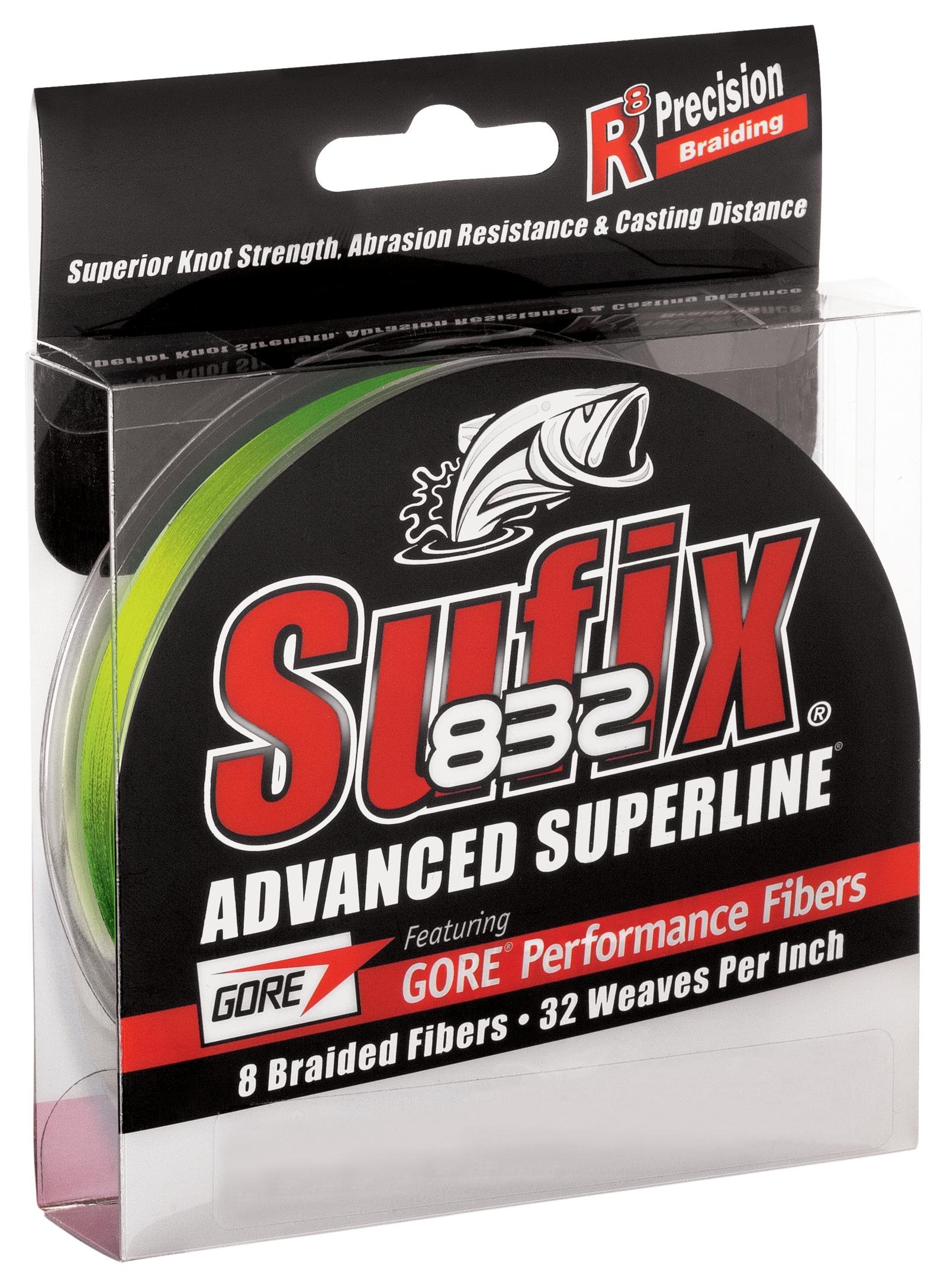
Braided lines are a top choice for baitcasters. They offer high strength in a thin diameter, allowing you to pack more line on your reel.
Their slickness makes your lures fly much further, and because they have no stretch, they’re sensitive even at long distances.
Braided lines also work topwaters, as they float on the water too.
For baitcaster keep in mind that a line too thin will be almost impossible to use with a baitcaster, because backlashes & tightening on the spool. The solution is using a line above 30lb test.
Sufix 832 Advanced Superline is another strong contender. It’s made with 8 fibers per strand, giving it a fine round shape that helps it cast far and quietly.
Power Pro Spectra Fiber is trusted by many anglers. It’s super sensitive, helping you feel even the lightest bites. You’ll also like how it cuts through water easily.
- Line Digging: Braided lines are prone to digging into the spool, especially under heavy load, which can cause casting issues and make it difficult to retrieve the line smoothly. This is true especially for very thin.
- Visibility: Braided lines are more visible in the water compared to monofilament or fluorocarbon, which can potentially spook fish, especially in clear water. If you fish weedy spots, it should not be a problem.
- Knot Slippage: Braided lines can be more prone to knot slippage if not tied correctly, requiring specific knots to ensure secure connections.
- Abrasion Resistance: While braided lines are generally strong, they can be less abrasion-resistant than fluorocarbon, making them susceptible to damage when fishing around sharp structures or rocky areas.
Remember, braided lines can be visible in clear water. If this worries you, try using a fluorocarbon leader like Sunline Super FC Sniper.
Do Copolymers Work With Baitcasters?
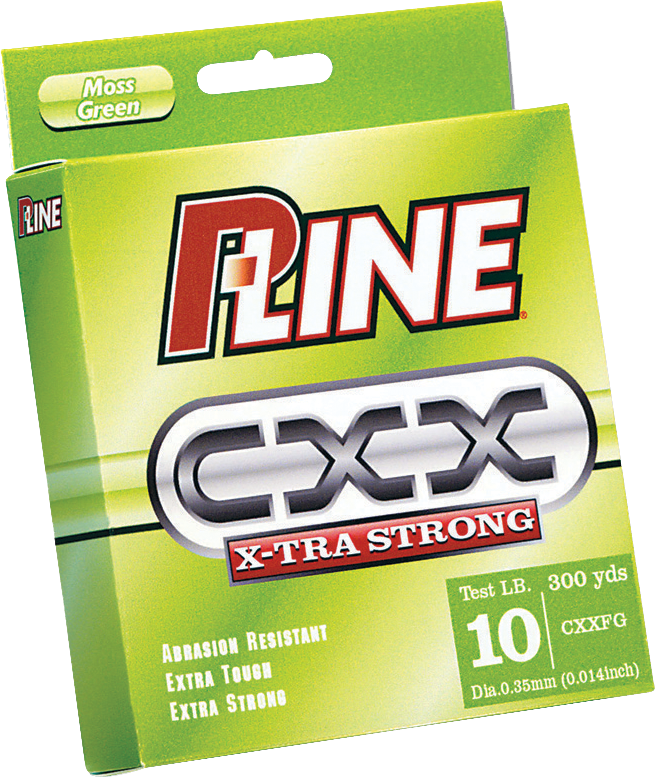
Copolymer fishing line can work well with baitcaster reels. It offers a nice mix of features from both monofilament and fluorocarbon lines.
Copolymer has less stretch than mono, but a bit more than fluoro. This gives you good sensitivity to feel bites while still having some shock absorption.
The near-neutral buoyancy of most copolymers lets them hover in the water column. This can be helpful for certain fishing techniques.
For beginners, copolymer is easier to use than fluorocarbon on a baitcaster. It’s not as stiff and has less memory, making casting smoother.
Here are some pros of using copolymer on your baitcaster:
- Good casting performance
- Moderate stretch
- Abrasion resistance
- Versatile for different fishing styles
If you’re new to baitcasting, copolymer can be a good choice. It’s more forgiving than fluoro but offers some performance benefits over plain mono.
Try starting with a 15-pound test copolymer line on your baitcaster. This weight works well for many bass fishing applications.
Advanced Fishing Line Techniques and Considerations
Using the right techniques and choosing the best line for your baitcaster can make a big difference in your fishing success. Let’s look at some ways to handle tough conditions and manage your line effectively.
Tackling Heavy Cover and Vegetation
When fishing in areas with lots of plants or obstacles, you need a strong line that won’t break easily. Braided lines made with Dyneema or Gore Performance fibers are great choices. They’re super strong for their size and can cut through weeds.
Look for lines labeled as abrasion-resistant. These hold up better when rubbing against rocks or logs.
To fish heavy cover:
- Use a heavier pound test line than usual
- Try colored lines to see your line in murky water
- Set your reel’s drag a bit tighter to pull fish out quickly
Remember, even the toughest line can break. Check it often for weak spots.
Mastering Knots and Line Management
Good knot-tying skills help you avoid break-offs and lost fish. The Albright knot is great for joining different types of line. Practice tying knots at home so you can do it quickly on the water.
To manage your line better:
- Spool new line onto your reel tightly to prevent tangles
- Use line conditioner to reduce memory and improve casting
- Change your line regularly, especially if you fish a lot
Pay attention to how your line behaves. If it feels stiff or coils up too much, it’s time for new line.
Proper line care helps you cast farther and feel more bites. It also saves money by making your line last longer.
Frequently Asked Questions
Choosing the right line for your baitcaster can be tricky. Here are some common questions to help you pick the best option for your needs.
What type of line should beginners choose for baitcasting reels?
For beginners, monofilament line is a good choice. It’s easy to handle and forgiving when you make casting mistakes. Mono also ties knots well and is cheaper than other options.
You can start with a 10-12 pound test line. This weight works for many fishing situations.
How does line weight affect casting and fishing with a baitcaster?
Lighter lines cast farther but are harder to control. Heavier lines give you more control but don’t cast as far.
For most fishing, a 12-15 pound test line is a good middle ground. It casts well and handles a variety of lures and fish sizes.
Which line material is best suited for bass fishing with a baitcaster?
Fluorocarbon is great for bass fishing. It sinks and has low visibility in water. This helps your lures reach deeper areas where bass often hide.
Braided line is another good choice. It’s very strong and sensitive, helping you feel even light bites.
How do different line types influence backlash when using baitcasters?
Backlash happens when your spool spins faster than your line comes off. Mono stretches more, which can help reduce backlash.
Braid has no stretch, so it can cause more backlash if you’re not careful. But once you get the hang of it, braid casts very smoothly.
Can the gear ratio of a baitcaster affect line performance?
Yes, gear ratio can affect how your line performs. Higher gear ratios reel in line faster. This can be good for some fishing methods but might cause more backlash.
Lower gear ratios give you more power. They work well with heavier lines and when fishing in deep water.
What considerations are important when selecting line size for baitcasters?
Think about the type of fish you’re after and where you’re fishing. Smaller line works better for clear water and skittish fish.
Thicker line is better for fishing around cover or for big fish. But remember, thicker line means less line on your spool.
Match your line size to your lure weight too. Lighter lures need thinner line to cast well.

